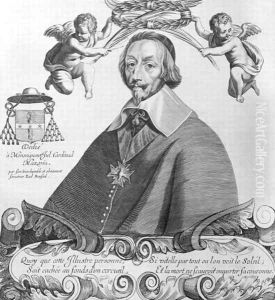Paul Roussel Paintings
Paul Ranson, born Paul-Élie Ranson on March 29, 1867, in Limoges, France, was a noted French painter and writer who played a significant role in the development of the Symbolist movement. Ranson developed an interest in the arts at an early age and moved to Paris to pursue his passion. He studied at the École des Arts Décoratifs and later at the Académie Julian, where he met fellow artists like Paul Sérusier, with whom he would form a close association.
Ranson was a founding member of the Nabis, a group of avant-garde artists influenced by Paul Gauguin's synthetism and the use of flat areas of bold color. The Nabis, whose name derives from the Hebrew word for 'prophets,' sought to create art that was deeply symbolic and spiritual. Ranson's work from this period is characterized by an ethereal quality, with themes often drawn from mythology, religion, and the occult. Along with his painting, he created tapestries and decorative arts that aligned with the Nabis' interest in breaking down the barriers between fine and applied arts.
His studio in Paris, nicknamed the 'Temple,' became a hub for the Nabis and other artists, where they would discuss philosophy, religion, and aesthetics. Ranson also taught at the Académie Ranson, which he established in 1908, and where he influenced a new generation of artists, including his wife France Ranson, who was an accomplished artist in her own right.
Paul Ranson's work evolved over his career, but he remained dedicated to exploring the symbolic and mystical aspects of art. He was also interested in the art of Japan, which influenced his style and his approach to composition and color. Ranson exhibited his work at various important exhibitions, including those of the Salon de la Rose+Croix, an annual exhibition of Symbolist art in Paris.
Ranson's contributions to art were cut short by his untimely death on February 20, 1928, in Paris. Despite his early passing, his legacy lived on through his influence on the Nabis and his role in shaping the Symbolist movement. His works can be found in numerous collections, including the Musée d'Orsay in Paris, reflecting his enduring impact on the world of art.
